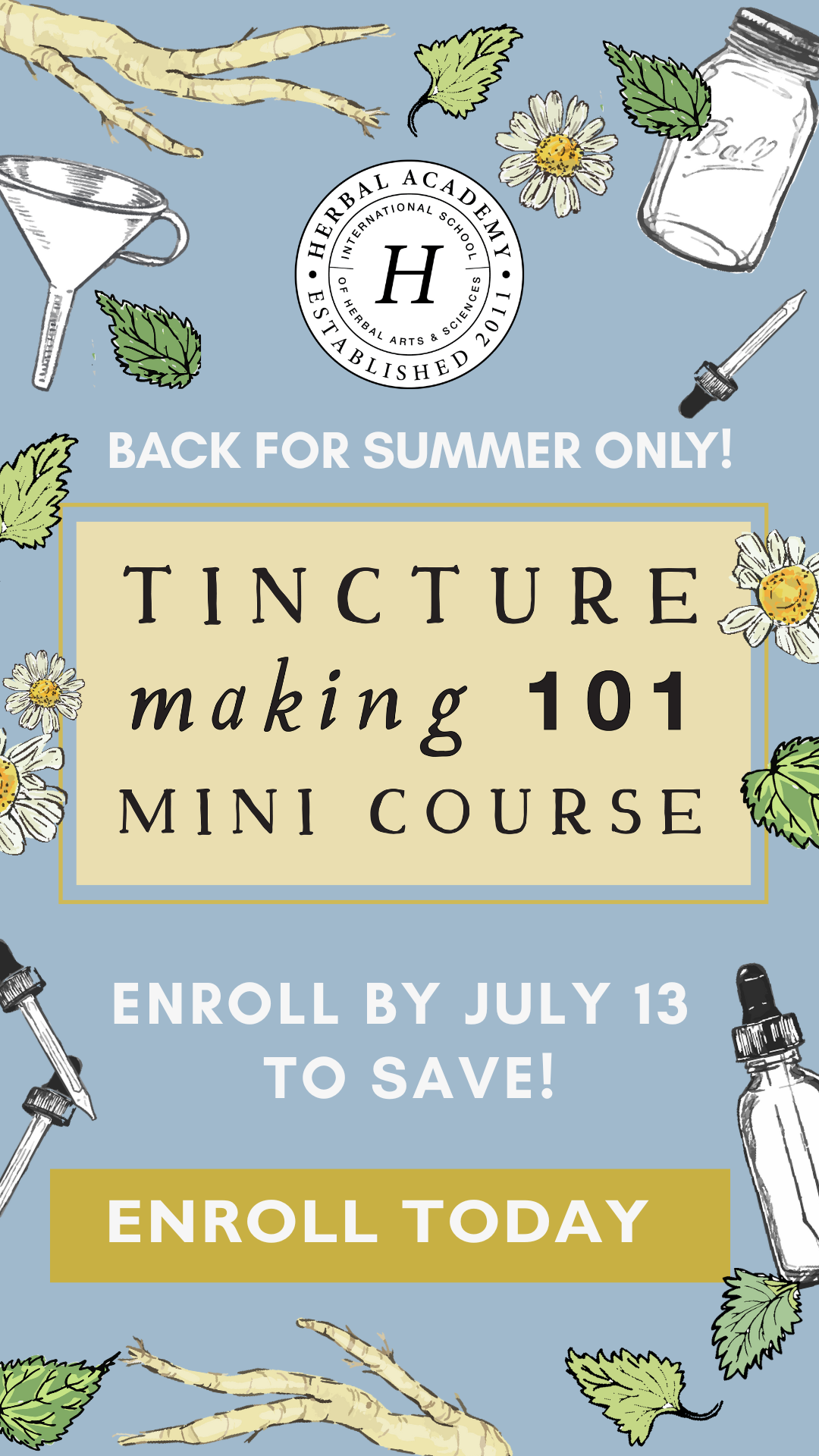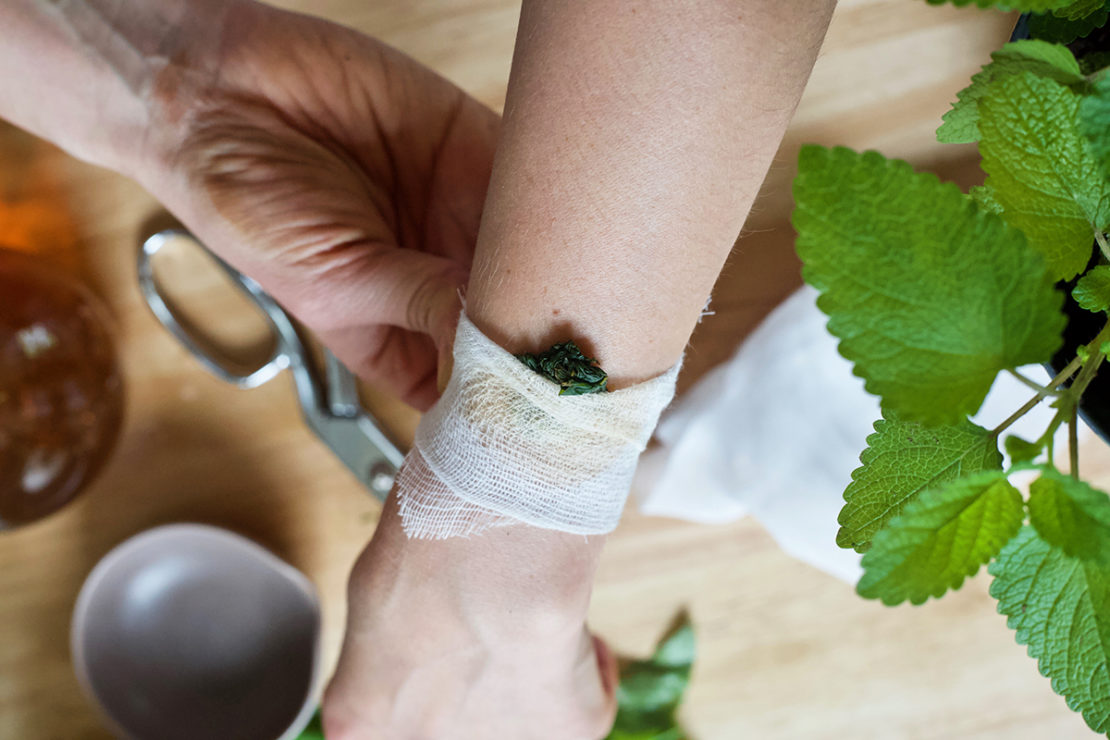
Easy DIY Bee Sting Poultice
Let’s face it: as beautiful and amazing as it is to be outdoors in nature with the birds and the bees—sometimes you get stung! Whether you are hard at work gardening, on a hike, or even just wandering around your city, bee stings can happen anywhere. Luckily for us, once you learn how to prepare an easy DIY bee sting poultice, you’ll be back on your feet and happily enjoying the outdoors again in no time! Read on to learn a bit about poultices, which herbs are helpful for bee stings in particular, and how to make your own easy DIY bee sting poultice.
Why Make A DIY Bee Sting Poultice?
When we get stung by a bee, the skin localized to the area becomes red, inflamed, swollen, and painful. For anyone who has experienced a bee sting before, you know how uncomfortable this can be! Herbs not only provide symptomatic support, but they can also help expedite the healing time of the stung area.
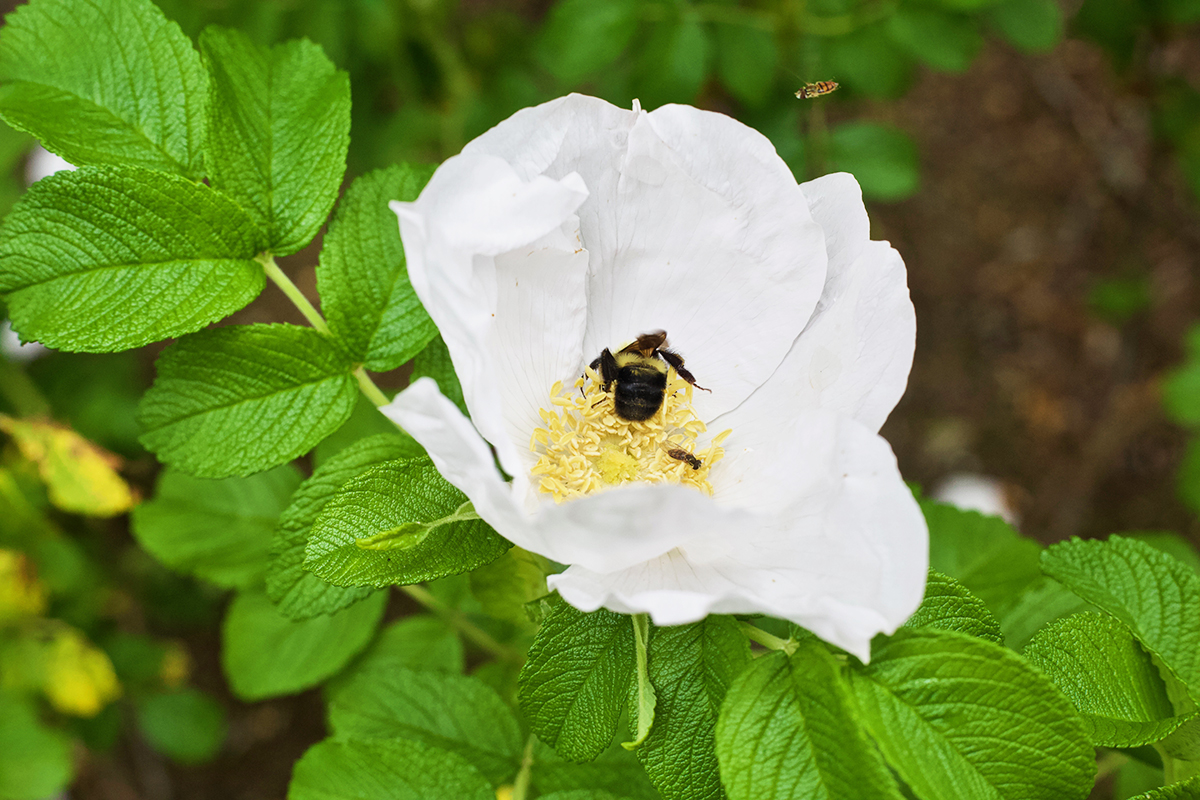
My favorite classic herbal recipe for soothing bee stings is to make an herbal poultice. For those who are new to herbalism, you might be wondering what a poultice is. A poultice is basically a moist paste made of herbs, clays, or other beneficial substances that are packed onto the skin for different uses. There are many different kinds of poultices you can make depending on the issue at hand, one of these being an easy DIY bee sting poultice like the recipe below.
Why make a poultice for bee stings? Not only are poultices incredibly fast to prepare (which is great when you need quick relief right after getting stung!), but they are also a great method to get the benefits from fresh herbs directly to the area needed. Since trying to pull the bee stinger out with your hands or a tweezer can inject more venom into the skin, applying a poultice comes in handy to help draw out both the stinger and some of the venom fast so they do not penetrate deeper into the skin (United States Department of Agriculture, 2018).
I have two different go-to herbs that I draw from interchangeably in my easy DIY bee sting poultice recipe: plantain (Plantago major) leaf and lemon balm (Melissa officinalis) aerial parts. Since preparing a DIY bee sting poultice typically has to be done fast when in a pinch, keep it simple and choose just one of the two herbs or whichever you happen to have on hand. Both of these herbs are very easy to grow at home in your garden, backyard, or in a pot.
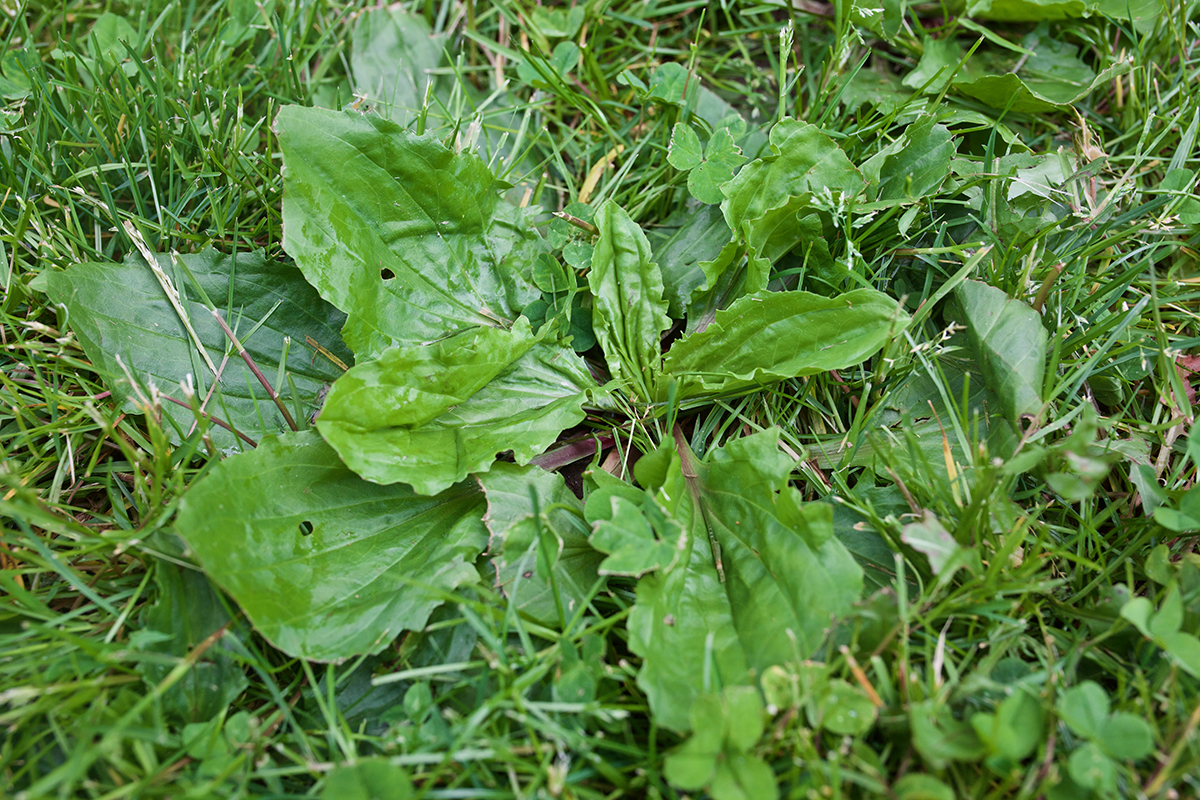
Plantain (Plantago major) Leaf
Plantain leaf is a valuable “weed” that has been used for centuries for its drawing and skin soothing properties. The Shoshoni Native Americans of the Northwestern plains in North America were noted to use plantain frequently for insect stings (including bee stings) by applying the bruised and broken herb as a compress or poultice (Griffin, 1997). This application holds true today, as plantain continues to be one of the most useful commonly found herbs for helping draw out both bee stingers and venom, soothe inflammation local to the area, and promote healthy skin repair.
A classic wound dressing, plantain is considered one of the ultimate first aid plants. Used for its pain-soothing, demulcent, astringent, and cooling nature, plantain is a truly valuable but under-appreciated herb (Holmes, 1989). After preparing your DIY bee sting poultice using plantain, you can even use a couple of whole plantain leaves to wrap around the area instead of a bandage to hold it in place!
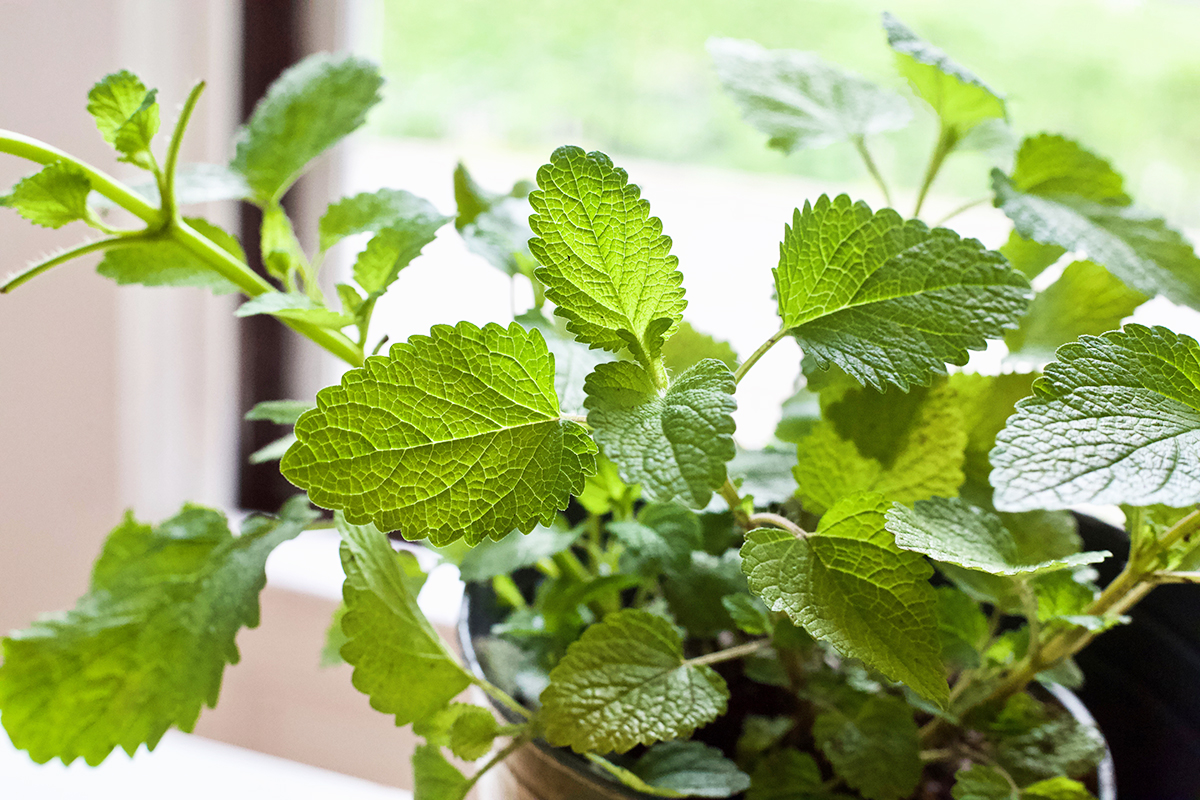
Lemon Balm (Melissa officinalis) Aerial Parts
Known to the Greeks as the “bee plant” (its genus name, Melissa, translates to “honeybee”), lemon balm is a classic garden herb for both attracting helpful pollinators, like bees, in your garden and serving as a supportive aid for bee stings (Blumenthal, 1997; Griffin, 1997). Due to lemon balm’s astringent nature, applying it as a poultice can help decrease swelling localized around the stung area through tightening and tonifying the tissues it touches. As a result, the reduction in swelling and inflammation can help soothe the pain.
Similar to that of plantain, fresh lemon balm leaves are also a valuable herb for bee stings given their ability to help push out the remaining venom left in the skin from the bee. Lemon balm is one of the few herbs in the mint plant family (Lamiaceae), that can actually help clear heat, providing soothing relief for the hot and tense tissues around a bee sting (Holmes, 1989).
Easy DIY Bee Sting Poultice

Bee Sting Poultice
A couple leaves of fresh lemon balm (Melissa officinalis) or plantain (Plantago major)
Either a splash of apple cider vinegar or fresh spit
- Before making your poultice, properly remove the bee’s stinger.
- Harvest a couple of leaves of fresh lemon balm or plantain.
- If using apple cider vinegar, smash and roll the leaves together in your fingers or hands to release some of the volatile oils and juices. Place them in a small bowl and mix the herbs with a splash of apple cider vinegar to make a poultice. If using spit, put the leaves in your mouth and chew them up well to make a spit-based poultice.
- Take the poultice and apply directly onto the sting site.
- Wrap a snug-fitting bandage (or 1-2 whole plantain leaves) over the top of the poultice to hold it in place. Leave the wrap on for about 30 minutes then remove.
- If the swelling is persistent and the stung area still painful, apply a new poultice, repeating as often as needed.
When To Seek Extra Care
Although bee stings are a very common occurrence that is frequently supported using an easy DIY bee sting poultice like the recipe above, it’s important to note when you need to seek professional medical attention instead! For instance, if you are showing any signs of an allergic reaction or if the stinger is not effectively removed and showing signs of infection, it is important to seek extra care.
Curious to learn more ways you can use plantain and lemon balm? Check out our posts: Creating A Local Materia Medica With Plantain and A Family Herb: Lemon Balm Benefits.
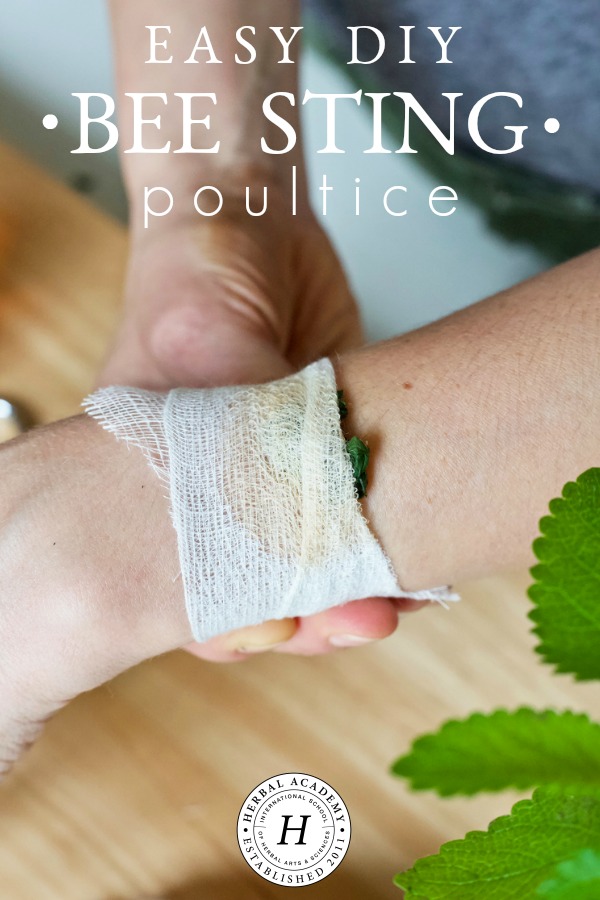
REFERENCES
Blumenthal, M., & Riggins, C.W. (1997). Popular herbs in the U.S. market: Therapeutic monographs. Austin, TX: American Botanical Council.
Griffin, J. (1997). Mother nature’s herbal. Woodbury, MN: Llewellyn Publications.
Holmes, P. (1989). The energetics of Western herbs (Vol. 2). Boulder, CO: Snow Lotus Press.
United States Department of Agriculture. (2018). Bee stings/safety. Retrieved from: https://www.ars.usda.gov/pacific-west-area/tucson-az/honey-bee-research/docs/bee-stings-safety/


